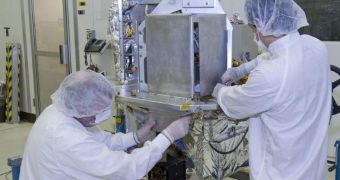Officials from the NASA Jet Propulsion Laboratory (JPL) announce the successful completion of the main science instrument that will equip the American space agency's next Earth-monitoring satellite.
The Orbiting Carbon Observatory-2 (OCO-2) is the follow-up to a mission that was destroyed on launch a few years back. NASA and the JPL did not give up their quest to launch a carbon-monitoring spacecraft into Earth's orbit.
The purpose of the OCO-2 will be to help inform studies covering various aspects of local and global warming, and climate change. In turn, these investigations will hopefully nudge politicians out of inaction and allow some mitigation measures to be taken against these phenomena.
To that end, a science team from the Pasadena, California-based JPL, built the new instrument to the highest possible standards. It shares the same name with its carrier spacecraft as well, the group says.
OCO-2 is part of the NASA Earth System Science Pathfinder Program, and it is meant to replace the original OCO missions, which failed in 2009. The Taurus XL delivery system that was supposed to take it to space, failed to reach orbit, and the mission was declared a failure.
If the new launch is successful, then OCO-2 will become NASA's first mission dedicated to the study of atmospheric carbon dioxide. CO2 plays a critically-important role in the way our atmosphere and oceans interact. In turn, these interactions are among the main drivers of climate change.
On May 9, the spacecraft was loaded onto a truck and sent to the Orbital Science Corporation (OSC) Satellite Manufacturing Facility, in Gilbert, near Phoenix. This is where the instrument will be unpacked, cleaned, tested, and then integrated with the rest of the spacecraft bus.
“The OCO-2 instrument looks great, and its delivery to Orbital's Gilbert, Ariz., facility is a big step forward in successfully launching and operating the mission in space,” JPL OCO-2 Project Manager, Ralph Basilio, explains.
“The mission provides a key new measurement that can be combined with other ground and aircraft measurements and satellite data to answer important questions about the processes that regulate atmospheric carbon dioxide and its role in the carbon cycle and climate,” a JPL press release says.
“This information could help policymakers and business leaders make better decisions to ensure climate stability and retain our quality of life. The mission will also serve as a pathfinder for future long-term satellite missions to monitor carbon dioxide,” the statement adds.
OCO-2 will probably launch around mid-2014. A clear takeoff date has yet to be announced.

 14 DAY TRIAL //
14 DAY TRIAL //